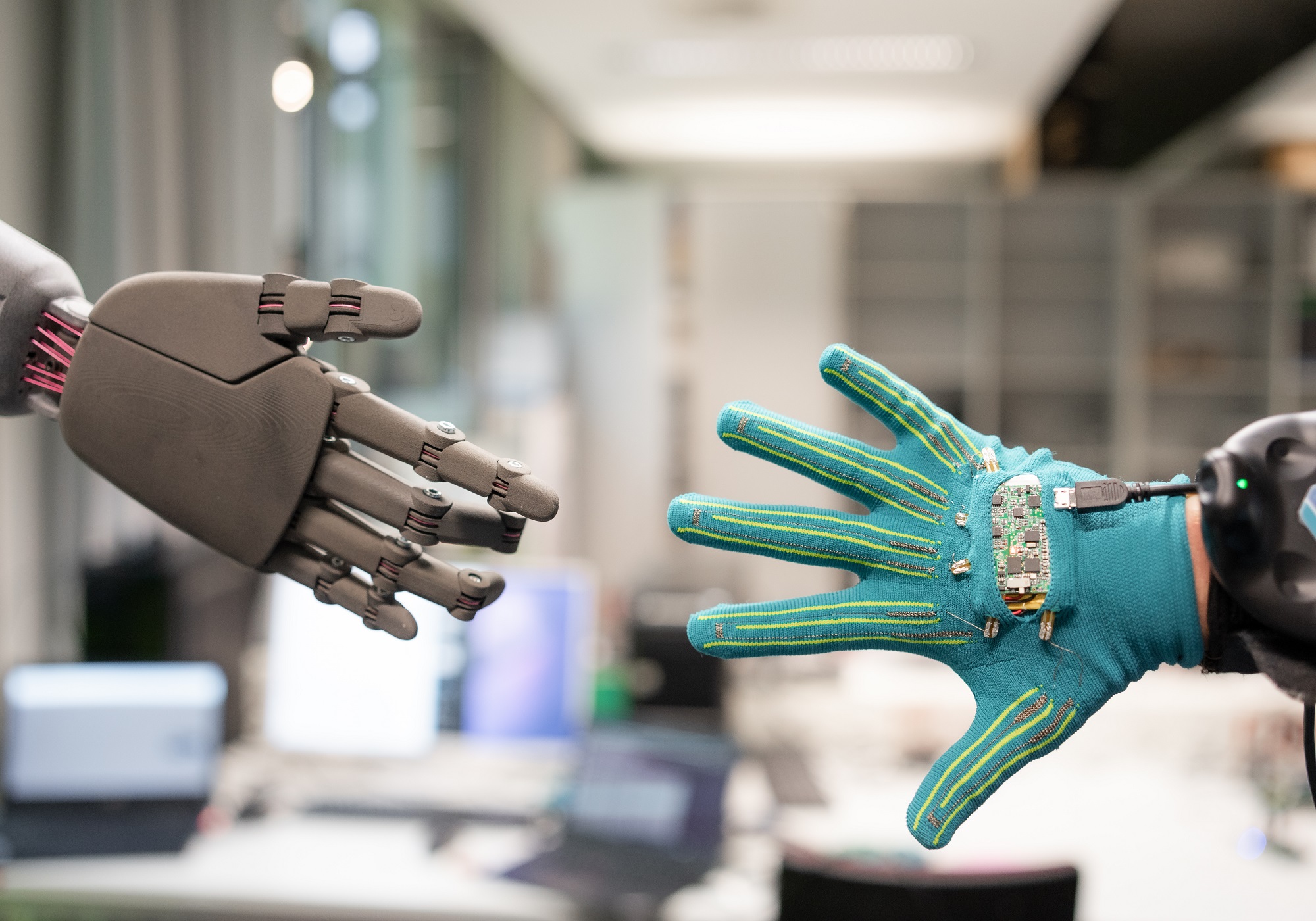Tactile Internet
Democratising Skills – our Research Focus
We advocate establishing the Centre for Tactile Internet with Human-in-the-Loop (CeTI) at Technische Universität Dresden (TUD) to achieve significant breakthroughs for enhancing collaborations between humans and machines or, more generally, cyber-physical systems (CPS) in real, virtual, and remote environments. CeTI’s vision is to enable humans to interact with co-operating CPS over intelligent wide-area-communication networks to promote equitable access to remote work and learning environments for people of different genders, ages, cultural backgrounds, or physical limitations. Thus, going far beyond the current state of the art, CeTI democratises the access to skills and expertise the same way as the current Internet has democratised the access to information.


Our Mission
Provide novel coding and compression methods, such as haptic codecs that take into consideration human factors, compressed sensing, and network coding to enable a combined control and communication system.
Our research objectives
Capitalising on outstanding expertise within TU Dresden and associated institutions in the fields of communication, robotics, electrical engineering, computer science, psychology, neuroscience, and medicine, the innovations of CeTI are reflected in its structural and research objectives. CeTI conducts multidisciplinary research to (I) advance the understanding of the complexities and dynamics of human goal-directed perceptions and actions from the psychological and medical perspectives, (II) develop novel sensor and actuator technologies that augment the human mind and body, (III) develop fast, bendable, adaptive, and reconfigurable electronics, (IV) create intelligent communication networks that connect humans and CPS by continuously adapting and learning to provide low latency, as well as high levels of resilience and security, (V) design new haptic coding schemes to cope with the deluge of information from massive numbers of body sensors, (VI) design online learning mechanisms as well as interface solutions for machines and humans to predict and augment each other’s actions, and (VII) to evaluate the above solutions as well as to engage the general public about the societal and ethical changes and new opportunities the new technologies will bring by means of use cases in medicine (context-aware robotic assistance systems in medical environments), industry (co-working industrial space), and the Internet of Skills (education and skill acquisition for the general public).
The concept of virtual research rooms
To enable a rich and dynamic exchange of ideas among the experts from the different research areas represented in CeTI we use the concept of virtual research rooms (VRR). We foresee a cross-level hierarchy from disciplinary talent pool rooms (TP) that group all principal investigators (PI) from a single domain, over interdisciplinary key concept rooms (K), in which experts from different disciplines co-operate on shared innovative solutions, to the use case rooms (U).
U1 – Medicine
In the medical context, two approaches are being pursued at CeTI: The first one is to use sensor-based capture of clinical expertise to store surgical skills and pass them on in medical education using new training technologies. The second is the development of medical assistance systems to enhance clinical performance and thus improve the quality of patient care.
U2 – Industry
The emergence of safe and collaborative robots is currently changing the way our workplaces are designed and structured. State-of-the-art robotic systems are capable of complex manipulation tasks and intuitive human–robot interaction making them potential coworkers (cobots) in many manufacturing scenarios (human–robotic cohabitation in industry). This new trend of collaborative industrial workspaces (cobotic cells) is motivated by various factors, such as the growing general durability and precision of robots, the cost-reduction potential for assembly and production, and the discovery of new application areas, such as remote work in dangerous areas.
U3 – Internet of Skills
The vision of the Internet of Skills development is to provide people around the world with access to scientifically based training opportunities using innovative Internet technologies. With this vision in mind, interdisciplinary teams at CeTI consisting of engineers, computer scientists and psychologists are researching how to capture the sensory impressions generated during movements and use them to design technically mediated feedback strategies.
K4 – Coadaptation
K4 will develop new integrative multimodal interface solutions for augmented human-CPS interactions, taking into account individual and age-related constraints. For machines, this is achieved through novel human-style reasoning techniques, and for humans, through computer-enhanced multimodal feedback.
TP4 – Flexible Electronics
TP4 will develop ultra-small, bendable electronic circuits designed to interconnect and process data collected by sensors on the human body. These advanced electronics will be seamlessly integrated with flexible and stretchable substrates, creating a natural and comfortable interface for the user.


